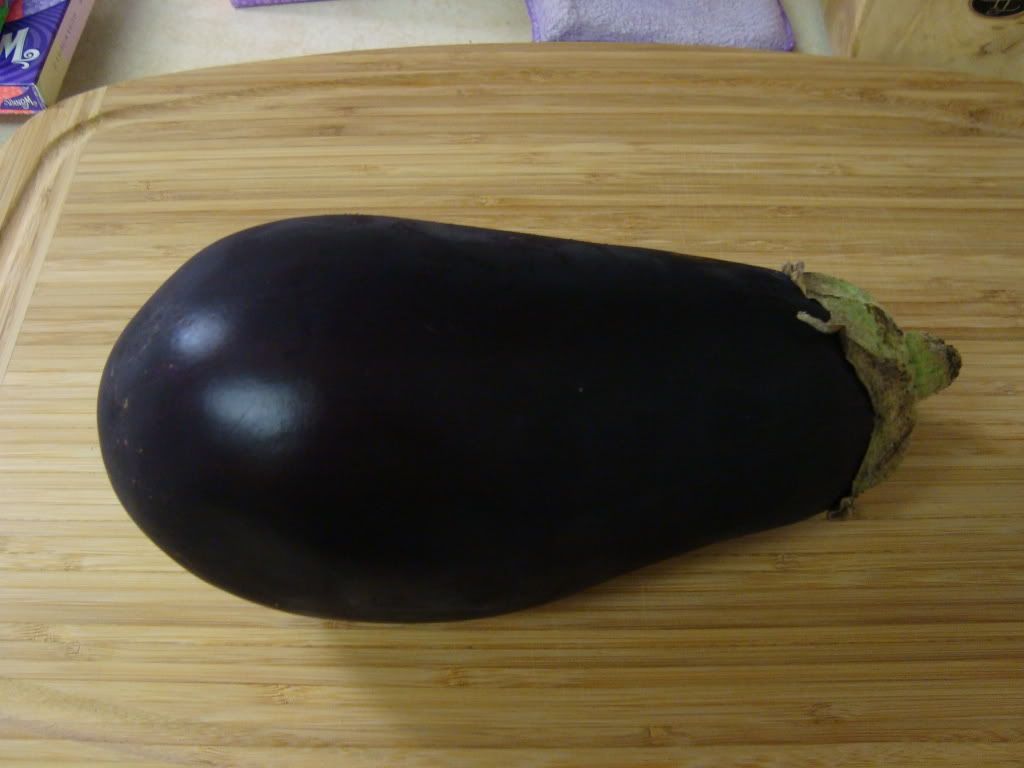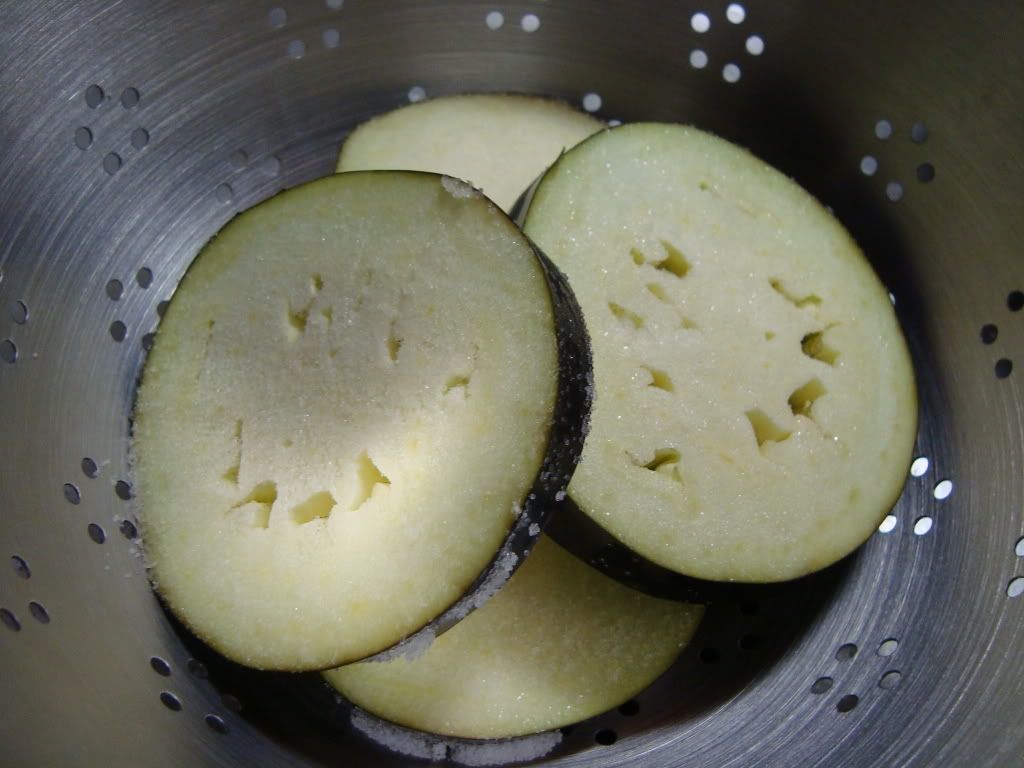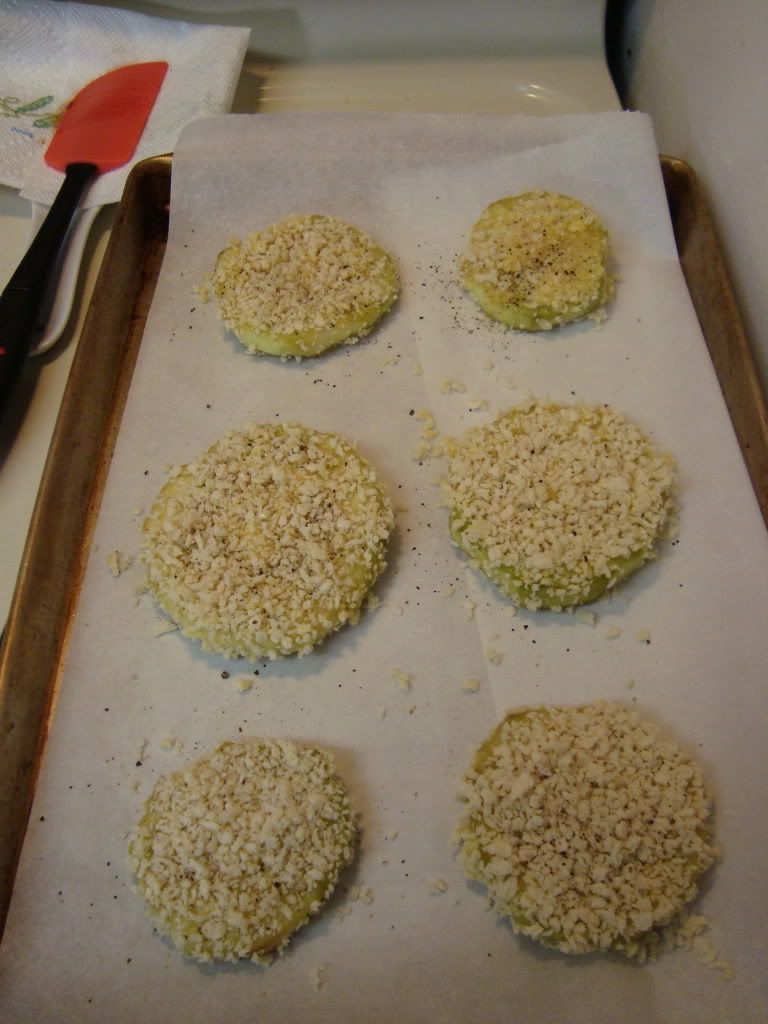Good evening everyone! There are certain foods that come pre-prejudiced. It may not matter if you have ever encountered or even tasted such products before; the fact of the matter is your mind is already made up. That product is gross, bland, smelly – etc. Eggplant may be the shining example of an unfairly judged food. I’m guilty of putting the purple veggie into that category, despite never having eaten or even held an eggplant. To me, it looked weird, felt weird and had a weird name – it had no business coming near my food.
Tonight, that’s going to change. During our weekly search for new and interesting recipes, I found a healthy eggplant parmesan recipe that was too intriguing to ignore. Eggplant parmesan is one of the more iconic Italian dishes and is a staple on many high end Italian restaurants’ menus. Its major drawback was that it normally clocks in at 600 to 700 calories a serving. When I saw that tonight’s recipe was a much more dietary friendly 450 calories, my mind was made up. Does eggplant deserve its bad rap? Or is this truly and unsung vegetable? Let’s find out!
The Recipe: Eggplant Parmesan
Original Recipe Found In: Fitness Magazine (May Issue)
What You’ll Need:
(Serves 2)
1 Small Eggplant
1 Egg
1 Cup Panko Bread Crumbs
1 Cup Marinara or Tomato Sauce
4 Tablespoons Parmesan Cheese
Fresh Basil Leaves (Hand torn)
Whole Wheat Angel Hair Pasta
The first question I had when preparing for this recipe was a simple one; how the heck do you prepare an eggplant? After all, this purple bulb sort of resembles a gourd and it has a hard rubbery skin like lemon (although not as thick). I had no idea if it was full of seeds, if it was hollow or hard – frankly, I was flying blind. Luckily a quick Google search and a few online articles later, I was prepped and ready to go.
 |
| Eggplant... it's daunting, isn't it? |
Preparing an eggplant is surprisingly simple. Begin by chopping off and discarding the green leafy top. The culinary world seemed split on whether or not one should peel an eggplant. Some accounts cited the eggplant’s outer skin as being thick and rubber like, while others made no mention of this issue. Since this was our first foray with the veggie, I didn’t want rubbery skin to be the culprit of its downfall. I opted to peel the eggplant (using a chef's knife around the inner edge is the best option for this task).
After peeling, there is very little to do outside of cutting the eggplant into ¼ to ½ inch thick sections. The eggplant itself is relatively soft and pliable – but it is resistant enough that a sharp knife is critical. A dull knife will likely squash the eggplant, rather than slice it. Use your sharpest chef’s knife for this task.
Finally, before officially beginning the recipe, you may want to ‘sweat’ the eggplant. As eggplants age, their internal juices become more and more bitter. The best way to remedy this situation is to liberally cover all of the eggplant pieces with salt and let them rest in a colander in the sink. The salt will bring the eggplant’s juices to the surface (it actually looks like it is sweating – thus the term). Allow the eggplant to sweat for 30 minutes to 1 hour. Once you’re satisfied, thoroughly rinse the eggplant under cold water (to wash off the sweat and salt) and then press the slices on a paper towel or clean kitchen towel to remove any excess moisture.
 |
| Sweating away the bitterness |
This step is unnecessary if you are purchasing a fresh (no more than two days old) eggplant – however, we purchased ours on Sunday, so I felt that sweating was a ‘better safe than sorry’ step.
Now that the eggplant is prepped, we can get cooking.
Preheat your oven to 425 degrees.
Crack the egg in a small bowl and beat well with a fork. Transfer the panko breading into a shallow bowl or plate. Finally, place a sheet of parchment paper over a large rimmed baking sheet. Arrange all three items (egg, bread crumbs, baking sheet) in order on your counter to form an eggplant breading assembly line.
Now, dip the sliced eggplant into the egg mixture and allow the excess to drip off. Next, press the slices into the panko, making sure both sides are evenly coated. Season the breaded slice with a light sprinkling of salt and pepper. Place the finished slice onto the baking sheet and repeat the process four times (two slices per serving if you’re serving more than two). Once all the slices have been breaded, lightly mist them with nonstick cooking spray (this encourages browning on the bread crumbs) and transfer the baking sheet into the oven.
Allow the eggplant slices to cook for 10 minutes before removing them from the oven, flipping the slices, misting with non stick spray and returning the baking sheet to the oven. Allow the slices to cook for an additional 10 minutes.
While the eggplant is cooking, you can begin warming your tomato sauce and bring a large pot of lightly salted water to a boil for the spaghetti. Cook the spaghetti according to the package instructions.
Once the eggplant is finished cooking and your pasta is al dente, you can begin assembling the dish. Serve a helping of pasta onto a plate or bowl and top the pasta with two slices of baked eggplant. Ladle ½ cup of tomato sauce over the dish and top everything off with a few torn basil leaves and 2 tablespoons of parmesan cheese. Serve and enjoy!
The Results:
For all of the buildup and apprehension, eggplant proved to be relatively tame. There were no bitter flavors to be found (I’m not sure if this is due to sweating the eggplant or if the whole bitter flavor thing is overblown – but I’m glad the bitter flavor was gone regardless of the reason). Oddly enough, you could almost describe eggplant as creamy. It was soft, but baked with a nice panko crunch – I’d compare it to another vegetable, but outside of maybe a softer parsnip that was bread with a cucumber, there really isn’t much of a comparison.
The flavors of this dish are quintessentially Italian – pasta, parmesan and tomatoes combined with a unique twist. It may be hard to get this one past the whole family (with eggplant’s bad reputation and all) but if your family is veggie friendly (or if you’re just cooking for two) this is one dish that’s worse diversifying your cooking portfolio for.
That’s all we have for you this week. Thank you, as always, for stopping by and sharing in our culinary adventures. We’re back on Monday with another edition of culinary news and highlights. Until then,
~Cheers



No comments:
Post a Comment